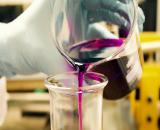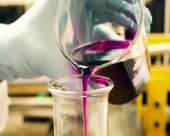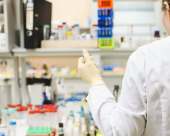10 Lab safety rules every researcher should follow
Self-care for researchers
As a researcher there is a lot you need to deal with, not to mention balancing your research with the demands of your personal life. Often, in the struggle to navigate academic life, researchers neglect themselves. One thing you can do to manage your own physical and mental well-being is practice self-care. In this series we bring you a set of posts that talk about self-care in academia and how you can go about taking care of yourself.

The importance of lab safety cannot be emphasized enough. Scientific laboratories expose researchers to a potentially dangerous environment that contains numerous hazards: chemical, biological, physical, and even radioactive. A review article published in Nature in November 2019 by Dana Ménard and John Trant paints a scary picture of the overall attitude towards lab safety. Here are some of the alarming findings of the study:
- 30% of scientists surveyed report having witnessed a lab accident severe enough to warrant medical attention.
- 15-30% of researchers report having been involved in a lab accident or having suffered an injury in the lab.
- 25-38% of lab personnel have been involved in accidents and injuries that have never been reported to the PI or supervisor.
- Only 40% of survey participants reported wearing personal protective equipment (PPE) when working in the lab.
- 25% of survey participants have not been trained in the specific hazard with which they work.
- 27% of researchers never performed any kind of risk assessment before conducting laboratory work.
According to Ménard and Trant, “risky practices and a cavalier attitude toward safety are so normalized within academia that the low standards in the field are not troubling or even apparent to those on the inside.” With an aim to effect a change in this attitude, we have listed a few basic rules and best practices that researchers should follow to ensure a safe working environment within the laboratory:
1. Wear protective lab attire: Make sure you use PPE at all times inside the laboratory. Put on a lab coat with full sleeves, closed-toe shoes, and safety goggles before entering the lab. If you have long hair, it’s better to keep it tied and out of the way when working in the lab. Find out if the work you are currently doing needs you to wear any other protective gear or remove accessories such as metal watches, rings, etc. Protective attire not only reduces the risk of damage to the skin and eyes, but also minimizes possibilities of contamination.
2. Do not bring food or drink into the lab: It may be tempting to sip on a cup of coffee or some water when working at your experiments, but steer clear of this. Food and drink in the lab can not only get messy, but can also be a source of distraction. Moreover, there is a possibility of contamination as chemical residues may be present on tables and on your hand when you are working in the lab. Also, make sure you wash your hands well before leaving the lab. Traces of harmful chemicals, tissue, bacteria, etc. can lead to contamination of other spaces such as the lunch table or your work station, causing illness or other problems.
3. Dispose of lab waste safely: This is one area of lab safety that researchers often tend to neglect. When disposing chemicals, do not pour them down the sink; use designated disposal bins or containers instead. Never pour back unused reagents into the bottle; dispose of them safely. Do not pour plant waste down the sink as it may clog up the drains; make sure you use disposal bins to dispose plant waste.
When using biological cultures, find out if it’s safe to use soap and water to clean up or if a stronger agent is needed to destroy dangerous microorganisms present in the cultures. Also, find out the protocol in your lab for disposing sharp products such as razors, needles, glass containers, etc. Read laboratory manuals and ask your colleagues or professors if you’re in doubt.
4. Use caution when handling chemicals: Injuries from chemicals in laboratories are fairly common, but at times, they can be fatal. Karen Wetterhahn, a renowned American chemist, died as a result of mercury poisoning in 1997. A few drops of a compound containing mercury fell on her hand, penetrated the gloves and entered her body. A few months later, she started exhibiting symptoms of mercury poisoning, such as loss of balance and impaired vision, speech, and hearing ability, and ultimately succumbed to the poison.
Do not sniff or taste any chemical. Be extremely cautious when mixing chemicals. Make sure to double-check the name of the reagent you are supposed to use and the one on the bottle before using it. Hold the container away from your body and swirl gently.
Read precautions on lab manuals and bottle labels before using and follow those to a tee. Do not leave reagent bottles unstoppered as this could cause accidents. To avoid accidents, label all test tubes and other containers and mark potentially dangerous chemicals.
5. Handle lab equipment carefully: Apart from chemicals, laboratory equipment can also cause accidents if mishandled. Use razor blades with caution, unplug hot plates, and switch off Bunsen burners. If you see any electrical cords that are frayed or damaged, do not touch them and report it to the relevant authorities immediately. Handle broken glassware carefully; do not use your hands to pick up the pieces – a broom and dustpan work best. Remember to put back all equipment in its proper place after use.
6. Know what to do in case of fire: Always store inflammable material in fireproof cabinets. Make sure you put them back in their designated cabinets after use; it’s extremely dangerous to leave them lying around. Use Bunsen burners and hot surfaces with caution. Always follow instructions when producing substances that have explosive properties. Find out the location of the fire extinguisher as soon as you start working in a lab. While you should definitely use the fire extinguisher as a first step, in case you see the fire spreading or the extinguisher not having the desired effect, call the fire department immediately.
7. Restrict your experiments to the lab: Do not carry lab equipment home or to any other place for preparation or any other purpose. This could lead to contamination of the experiment as well as the other environment. It’s best to wash the clothes you’ve used in the lab before reusing them.
8. Do not panic in case of accidents: Even after taking precautions, accidents do happen. In case of an accident, don’t panic. Panic can worsen the situation. Stay calm; don’t run as you might trip over wires or knock down chemical bottles. It’s important to know the location of safety equipment, such as the fire extinguisher, first aid kit, emergency phone, eyewash stations, etc. If chemicals or particles get into your eyes or skin, wash them off immediately. Take lab safety drills seriously; attending these regularly will prepare you for actual emergencies. Finally, always keep your supervisor informed about your experiment and follow their instructions carefully.
9. Work with a lab partner as far as possible: Try to work with someone else in the lab. While this may not always be possible, having a second pair of eyes increases chances of mistakes and slip-ups getting detected on time, preventing major damage. Additionally, with two people, response is always quicker in case of accidents. Even for a minor injury, like a cut from broken glass, it helps to have someone around to get the first aid kit or help with cleaning the glass.
10. Act responsibly in the lab: While the lab is meant for experiments, they should be planned and researched well in advance. Don’t conduct random experiments just for fun, like this group of students (in the anecdote “Fire oops”) who drew on the lab table using alcohol and setting it on fire to see the pretty blue flame trace out the doodle. You should have the right attitude when you come to the lab and make sure you’re fully focused. A little distraction can often cause irreversible damage, and in extreme situations, even loss of lives. Alert others in the lab to maintain a safe distance when mixing chemicals or dealing with potentially hazardous substances. Make sure you double-check everything before use and clean up after.
While laboratories and institutions are accountable for lab safety and there are regulations at local, state, and federal levels, individual researchers also carry the responsibility of going beyond simple compliance and fostering a culture of safety and caution at the laboratory. This requires a strong commitment to keeping yourself and others around you safe from injury – by working attentively, carefully, and safely in the laboratory.
Do you often feel stressed? Wouldn't it be nice to share your highs and lows with a group of researchers who understand you? Join Researcher Voice, a support group for researchers on Facebook that focuses on their physical, mental, and emotional wellness. Click here to join and read this article to take a sneak peak into what's going on in the group.
Related reading:
- Lab truths: Everything I knew about laboratories was wrong
- Dismantling the stereotype of the "Crazy Scientist"
- Lab history: The things you see when you stick around forever (Part 1) and (Part 2)
References:
- Lab Safety: Terrifying Statistics
- Top 10 lab safety rules
- Top 10 Laboratory Safety Tips every research Scientist Must follow
- The 10 Most Important Lab Safety Rules
- Lab Safety Rules and Guidelines
- 8 Stories of Lab Safety Gone Wrong
Comments
You're looking to give wings to your academic career and publication journey. We like that!
Why don't we give you complete access! Create a free account and get unlimited access to all resources & a vibrant researcher community.

























